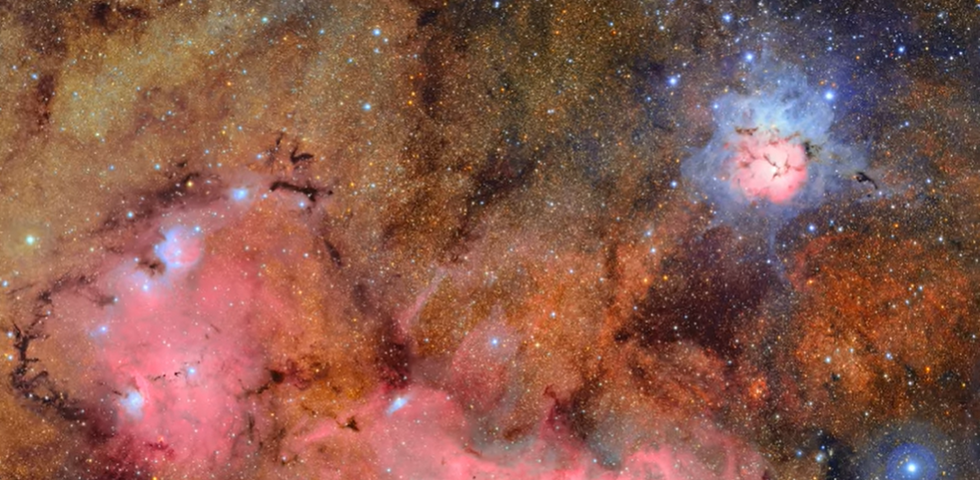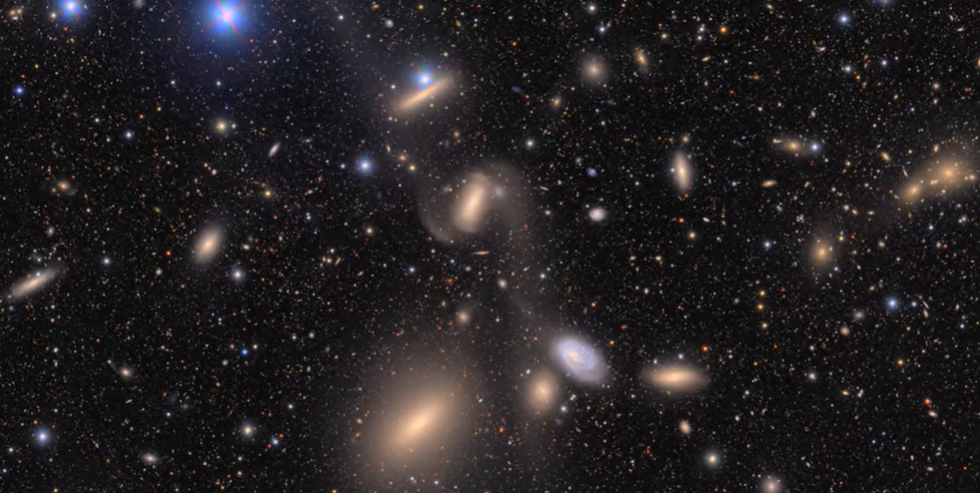New planet hidden in our solar system could be found in months as telescope reveals incredible images
The telescope located 2,104 previously unknown asteroids in just ten hours
Don't Miss
Most Read
Scientists could locate a hypothetical ninth planet after the launch of a new revolutionary telescope in Chile.
Vera C Rubin observatory could fundamentally alter planetary discovery within our solar system.
The telescope's extraordinary capabilities could transform our understanding of the universe through its ability to penetrate its darkest regions.
Housing the globe's most advanced digital camera, the groundbreaking facility is a once-in-a-generation leap forward for space observation.

The Trifid and Lagoon nebulae
|NSF-DOE Vera C Rubin Observatory
The observatory's potential extends beyond planetary detection, with expectations that it will identify hazardous asteroids approaching Earth whilst mapping our galaxy's structure.
Additionally, the telescope aims to resolve fundamental mysteries surrounding dark matter, the enigmatic substance comprising the majority of our universe's composition.
The facility's detection capabilities were demonstrated during a Monday press conference, where officials revealed the telescope had identified 2,104 previously unknown asteroids alongside seven near-Earth objects within just ten hours of operation.
This performance dwarfs conventional space and ground-based surveys, which typically locate approximately 20,000 asteroids across an entire year when combined.
Professor Catherine Heymans, Astronomer Royal for Scotland, said: "I personally have been working towards this point for about 25 years.
"For decades, we wanted to build this phenomenal facility and to do this type of survey."
The observatory achieves its exceptional performance through a three-mirror configuration that maximises light collection from distant celestial objects.
Incoming starlight strikes the primary mirror measuring 8.4 metres in diameter, reflects onto a 3.4-metre secondary mirror, then bounces to a 4.8-metre tertiary mirror before reaching the camera system.
The mirrors' reflectivity and operational speed enable the telescope to gather substantial amounts of light, which Guillem Megias, an active optics expert at the observatory, says is "really important" to observe things from "really far away which, in astronomy, means they come from earlier times."
One of the observatory's primary objectives involves understanding universal history by detecting faint galaxies and supernova explosions from billions of years ago.

Galaxies pictured inside the Virgo Cluster
|NSF-DOE Vera C Rubin Observatory
Britain serves as a crucial partner in this astronomical endeavour, with the nation set to host data processing centres that will handle the extraordinarily detailed images captured as the telescope systematically surveys its surroundings.
The telescope's comprehensive approach involves capturing everything within its field of view as it sweeps across the southern sky.
"When we got the first photo up here, it was a special moment," Megias said.
He added: "When I first started working with this project, I met someone who had been working on it since 1996. I was born in 1997. It makes you realise this is an endeavour of a generation of astronomers."











